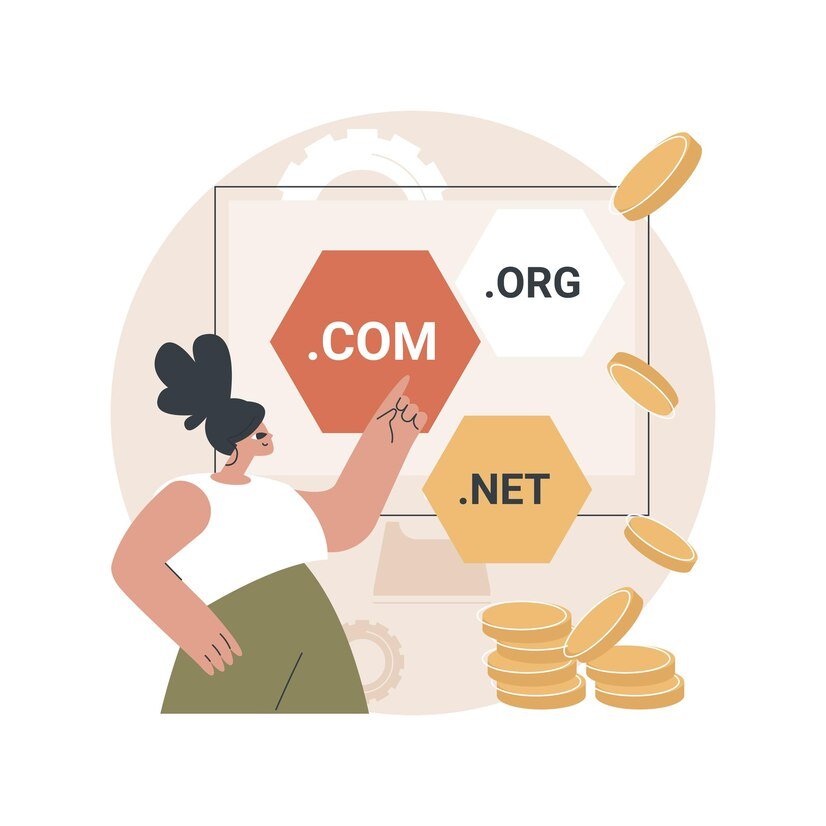Table of Contents
Introduction to how to use Custom Domains in Bonsai
A. Overview of Custom Domains
In the modern digital landscape, establishing How to use custom domains in bonsai a strong online presence is essential for businesses, freelancers, and entrepreneurs. One of the most effective ways to achieve this is by using a custom domain. A custom domain not only serves as your online address but also enhances your brand identity. Instead of relying on generic URLs, a custom domain—like www.yourbusiness.com—provides a unique and professional touch that can significantly improve your credibility and visibility.
1. Importance of Branding
Branding is more than just a logo or a catchy tagline; it encompasses the entire perception of your business in the minds of your audience. A custom domain is a fundamental part of this branding process. It reinforces your brand’s identity, making it easier for clients and customers to recognize and remember you. When potential clients see your custom domain, they associate it with professionalism and reliability.
A strong brand presence fosters trust, which is critical in converting leads into customers. Using a custom domain helps you stand out from competitors who may use generic or free domains, positioning you as a serious player in your industry.
2. Benefits of Using a Custom Domain
The benefits of using a custom domain in Bonsai are manifold:
- Professional Image: A custom domain conveys that you are serious about your business. It enhances your credibility and makes a positive impression on potential clients.
- Brand Recognition: A unique domain name helps create brand recognition. The more distinct your domain, the easier it is for clients to remember you.
- SEO Advantages: Custom domains can enhance your search engine optimization (SEO) efforts. When your domain includes relevant keywords, it can help improve your rankings on search engines.
- Control Over Content: With a custom domain, you have full control over your website content and how it is presented to your audience, allowing for flexibility in marketing and branding strategies.
B. Purpose of the Guide
This guide aims to provide a comprehensive, step-by-step approach to setting up and using custom domains in Bonsai. Whether you’re a freelancer, consultant, or small business owner, this guide will help you navigate the process, from domain registration to configuration and optimization. By the end, you’ll have the knowledge and tools to leverage your custom domain effectively, enhancing your online presence and brand identity.” Effectively Transform Your Business Image: How to Use Custom Domains in Bonsai 2024″
Prerequisites

A. Bonsai Account
Before diving into the process of setting up a custom domain, ensure you have an active Bonsai account. Bonsai is a robust platform designed for freelancers and small business owners, offering features such as proposal creation, invoicing, and project management. If you don’t already have an account, visit the Bonsai website and sign up for a plan that suits your needs.
B. Domain Registration
1. Choosing a Domain Registrar
The first step in acquiring a custom domain is selecting a domain registrar. A registrar is a company that manages the reservation of Internet domain names. Popular registrars include:
- GoDaddy: Known for a wide selection of domains and robust customer support, GoDaddy is one of the largest domain registrars.
- Namecheap: Offers competitive pricing and a user-friendly interface, making it easy to navigate for beginners.
- Google Domains: Provides straightforward integration with other Google services, ensuring a seamless experience for users of Google’s ecosystem.
- Bluehost: Often bundled with web hosting services, Bluehost is a popular choice for those looking to establish a website.
When choosing a registrar, consider factors such as pricing, customer support, and additional services like privacy protection.
2. Ensuring Domain Ownership
Once you’ve selected a registrar, you’ll need to search for and register your desired domain name. It’s crucial to ensure that the domain you choose reflects your brand and is easy to remember. Check for availability, and consider variations or alternative extensions (like .net or .co) if your first choice is taken.
When registering your domain, make sure you complete all necessary steps to confirm your ownership. This often includes providing accurate contact information and completing any verification processes required by the registrar. How to Use Custom Domains in Bonsai
Configuring Your Custom Domain

A. Accessing Domain Settings in Bonsai
1. Logging into Your Bonsai Account
Start by logging into your Bonsai account. Navigate to the dashboard where you can manage your projects, proposals, and account settings.
2. Navigating to the Domain Settings Section
In the account settings, look for the “Domain Settings” or “Custom Domain” section. This area is where you will add and configure your custom domain.
B. Adding Your Custom Domain
1. Inputting Your Domain Name
Once you’re in the domain settings, you’ll see an option to add your custom domain. Enter your domain name exactly as you want it to appear (e.g., www.yourbusiness.com).
2. Verifying Domain Ownership
After entering your domain, Bonsai will require you to verify ownership. This may involve adding a specific DNS record through your domain registrar or uploading a verification file to your website. Follow the prompts provided by Bonsai to complete this verification process.
DNS Settings Configuration
A. Understanding DNS Records
DNS (Domain Name System) records are crucial for linking your domain to various services. Understanding the different types of DNS records can help you configure your custom domain effectively. How to Use Custom Domains in Bonsai
1. Types of DNS Records (A, CNAME, etc.)
- A Record: Points your domain to a specific IP address. This is essential for directing traffic from your domain to your server.
- CNAME Record: Allows you to alias one domain to another (e.g., www to non-www). This is useful for maintaining consistency in branding.
- MX Record: Directs email traffic for your domain. If you plan to use email with your custom domain, you will need to set up MX records.
B. Updating DNS Records
1. Accessing Your Domain Registrar’s DNS Management
Log into your domain registrar account and locate the DNS management or domain settings section. This is where you can edit your DNS records.
2. Setting A Records or CNAME Records as Required
Based on the instructions provided by Bonsai, you may need to set either A records or CNAME records. Enter the required information carefully to ensure proper routing.
How to Use Custom Domains in Bonsai For example:
- If you are instructed to set an A record, you might enter the IP address provided by Bonsai in the appropriate field.
- For a CNAME record, you will enter the alias (e.g., www) and the target domain (e.g., yourbusiness.bonsai.com).
3. Saving Changes and Propagation Time
After updating your DNS records, save the changes. Keep in mind that DNS changes can take some time to propagate—anywhere from a few minutes to 48 hours. During this time, your custom domain may not work as expected.
How to Use Custom Domains in Bonsai Linking Your Custom Domain
A. Finalizing Domain Connection
1. Returning to Bonsai to Confirm Domain Setup
After the DNS changes have propagated, return to the Bonsai domain settings section. There may be an option to confirm your domain setup. Follow any additional prompts to finalize the connection.
2. Testing the Connection
Once you’ve confirmed the setup, it’s essential to test your custom domain. Open a web browser and enter your custom domain. If everything is configured correctly, you should see your Bonsai website or landing page.
B. Troubleshooting Common Issues
1. Common DNS Propagation Problems
If your custom domain doesn’t seem to work immediately, don’t panic. DNS propagation can take time. However, if it’s been more than 48 hours, you may need to troubleshoot.
Common issues include:
- Incorrect DNS records: Double-check that you entered the correct information.
- Caching issues: Clear your browser cache or try accessing your domain from a different device.
2. Resolving Connection Issues
If you’re still having trouble after verifying DNS settings, consider the following:
- Contact your domain registrar for assistance.
- Reach out to Bonsai support to ensure there are no issues on their end.
Using Your Custom Domain
A. Setting Up Email with Your Custom Domain (Optional)
One of the advantages of having a custom domain is the ability to create professional email addresses. Using an email address like info@yourbusiness.com enhances your credibility and looks more professional than a generic email address.
1. Email Hosting Options
There are several options for hosting your email with a custom domain:
- Google Workspace: Offers a suite of tools including Gmail, Docs, Drive, and more. It’s user-friendly and integrates well with many applications.
- Microsoft 365: Provides robust email hosting along with access to Microsoft Office applications.
- Zoho Mail: A cost-effective solution for small businesses, Zoho offers professional email hosting and various productivity tools.
2. Configuring Email Settings
Once you’ve chosen an email hosting provider, you’ll need to set up your email accounts. This usually involves:
- Adding MX records to your DNS settings.
- Configuring any additional settings as required by your email provider.
- Creating email accounts for yourself and your team members.
B. Best Practices for Branding
How to use custom domains in bonsai Having a custom domain is just the first step; how you utilize it is equally important. Here are some best practices to ensure you get the most out of your custom domain:
1. Consistency in Branding Across Platforms
Ensure that your custom domain is reflected in all your branding efforts aving a custom domain is just the first step; how you utilize it is equally important. Here are some best practices to ensure you get the most out of your custom domain:






